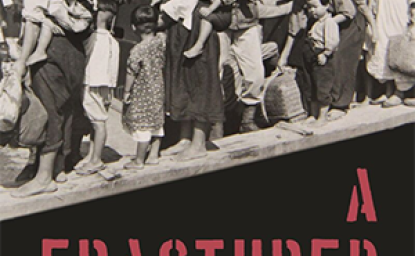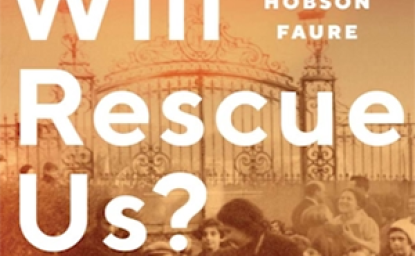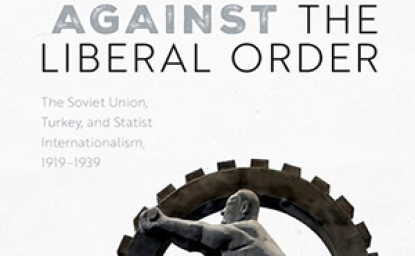The Trouble with Political Parties and the Rise of the Yellow Vests


To view a version of this report that includes supplemental graphs, click here to download a PDF.
The Trouble with Political Parties and the Rise of the Yellow Vests
Patrick Liddiard
Abstract: How did we get the “Yellow Vest” protests in France? In France and other long-standing democracies, broad socioeconomic changes since the end of World War II transformed the structure of the electorate and the operation of political parties, producing growing policy convergence between parties and a pool of unaffiliated voters who felt no party represented them. Voters have increasingly refused to vote, or when they did vote, cast their ballots for new parties. In France, when a party elected by traditional supporters of the center-left proposed fiscal policies associated with the center-right, a constituency without a party organized via social media and took to the streets. The widespread outbreak of the Yellow Vest protests was particular to France, but the preconditions are not, and other long-standing democracies are also at risk of sudden outbreaks of protest—potentially even protest in the form of anti-establishment populist parties.
On November 17, 2018, demonstrators clad in the reflective yellow vests first took to France’s roundabouts to protest the government’s proposed fuel tax. The protesters were unconnected to any political party, labor union, or civil society organization, coordinating their activities via Facebook. Weeks of intense protests would produce a meeting between the French prime minister and a spokesperson selected via online balloting[i]—although some “Yellow Vests” would dispute who actually represented them. The protests would also turn violent, producing millions of dollars in property damage and lost tourism revenue before the government withdrew its proposed fuel tax.[ii]
The process was the epitome of “disintermediation” in politics—the reduced clout of political parties and other mass organizations to serve as intermediaries between the government and citizens. Historically, labor unions in France have been key to organizing large scale protests, and we typically think of discussions and negotiations over economic policy as occurring almost exclusively between the government and opposition parties. What changes during the past half-century have caused voters to withdraw from political parties, and the parties to reorient themselves away from mass constituencies?
Postindustrialism Decreased “Demand” for Traditional Political Parties
Scholars since at least the 1980s have noted that structural economic changes in advanced industrial democracies have decreased voters’ demand for traditional political parties of the center-left and center-right. Deindustrialization and its shift from manual labor to a more service-oriented economy has reduced the working class share of the population since as least the 1950s, decreasing the electoral viability of parties of the left.[iii] For example, the working class share of Germany’s electorate was more than halved between 2000 and 2016, from 39 to 17 percent.[iv] Similarly, in Britain, the working class share of the electorate declined roughly 20 percentage points from 1961 to 2006—from nearly 60 percent to less than 40 percent—as the growing white-collar middle class became a majority of the country’s electorate by the middle of the 1980s.[v]
The economic development behind deindustrialization and the growth of the middle class in advanced democracies also led to an increasingly educated population. Russel Dalton and Michael Wattenberg suggest that increasingly informed electorates have become less dependent on information from traditional parties to make individual political judgements. Voters became less deferential to party elites and less attached to party labels, and they increasingly engaged in nonpartisan forms of political mobilization, such as through civil society organizations.[vi] For example, as the share of the Portugal’s electorate belonging to a political party declined in the 1980s,[vii] the number of Portuguese voluntary organizations created each year reached triple digits.[viii]
The three decades immediately after World War II were part of a period of unprecedented peace and prosperity for many Western Europeans, further decreasing the salience of issues that had traditionally defined voters’ left/right orientations. Economic growth doubled from its historical average to roughly four percent a year,[ix] governments expanded the welfare state to protect individual workers from the booms and busts of the business cycle,[x] and interstate conflict globally dropped precipitously after occurring at an unusually high rate in the first half of the 20th Century.[xi] With individuals’ basic material and personal security needs increasingly being met, voters were free to explore more “postmaterialist” values of self-expression. These included values associated with personal autonomy, gender, and environmentalism. The 1960s and 1970s saw the first wave of niche parties—those focusing narrowly on particular non-economic issues—like the Greens entering Western European legislatures.[xii]
Individuals’ desire for increased self-expression in politics was in some ways echoed by larger communities, as countries that took part in EU expansion saw increased electoral support for regionalist political parties—parties seeking greater autonomy or independence. Seth Jolly suggests support for regionalist parties in Europe—including Belgium, Italy, Spain, and the UK—increased because greater supranational economic and political integration into the EU decreased states’ costs of administration and reduced security threats from neighboring countries. These reduced costs buoyed regionalist party support by making it more likely that a small state would be economically and politically viable in the event of secession.[xiii]
Changing Methods of Mobilization Reduced “Supply” of Traditional Mass Parties
Richard Katz and Peter Mair argue that the expansion of the franchise during the past two centuries changed the social bases of parties and how parties mobilized support, as they increasingly professionalized with an eye toward maintaining the party in power at the expense of grassroots organization. The original mass parties that scholars took to be an ideal type by the 1950s were actually a unique legacy of broad-based political mobilization during democratization in the 19th and 20th Centuries.[xiv]
Industrialization in the 19th Century generated tremendous wealth that increased the share of the population meeting suffrage requirements but also created a large pool of urban workers, much of which remained unfranchised. The sheer size of the working class allowed leaders of the new mass parties such as social democrats on the left to mobilize supporters on a heretofore unseen scale on the basis of shared economic and political interests, to include expanding the franchise. On the right, Christian democrats, threatened by secular and elite liberal parties’ anti-clerical legislation, began to mobilize mass constituencies centered largely on Catholicism as a political identity in attempt to protect their church’s privileges.[xv]
The legacy conservative and liberal parties of the old elite, which traditionally only had to mobilize supporters in the hundreds among the upper and middle classes, began to adopt portions of the mass party model to survive in an era of expanding suffrage. For example, as legislation nearly doubled Britain’s electorate in the 1880s,[xvi] the Conservative Party established the Primrose League as a mass social organization that sponsored suppers, dances, concerts, and even choirs and cycling clubs for its members in order to increase the party’s appeal among middle- and working-class voters.[xvii]
After achieving universal suffrage in in most countries in Western Europe—by 1919 for men, by 1952 for women—mass parties on the left could no longer rely on the shared democratization struggle to mobilize support from the working class as a whole. Just as Christian democrats in the 19th Century could no longer rely on a solid Catholic vote once the threats to Catholic privilege had subsided,[xviii] social democrats sought to broaden their support and attract members through appeals to policy rather than social positions. Parties of all stripes became, in Otto Kirchheimer’s description, “catch-all” parties, with increasingly similar policy platforms.[xix] For example, Geoffrey Evans and James Tilley found that the policy convergence between the British Labor and Conservative parties in the 1990s was chiefly the result of Labor’s turn from the left toward centrism, which was driven by party leaders’ concerns about the shrinking size of their core working-class constituency.[xx]
New media and campaign finance laws strengthened the power of party leaders and reduced their reliance on member mobilization. As parties increasingly turned to television to make campaign appeals to broader sections of the population, their staffs became more professional, with more reliance on pollsters and consultants than rank-and-file party members.[xxi] Detached from their social bases, parties took advantage on their privileged position in the state to maintain themselves in power. By passing media regulations and campaign finance laws that favored parties already in government and disadvantaged potential new entrants, they came to be “cartel parties,” in Katz and Mair’s description.[xxii]
Unaffiliated Voters and Volatile Elections
The decreasing demand for and supply of traditional political parties created party “dealignment,” or a growing pool of unaffiliated voters, many of whom felt that no party represented them. For example, as the policy positions of the major British parties converged in the 1990s, the share of working-class respondents who told pollsters that they supported no party roughly doubled between 1980 and 2010, from just under 20 percent to nearly 40 percent.[xxiii] As social democratic parties in Germany and Sweden similarly moved to the center, supporters’ attachments to these parties and enthusiasm to vote declined; in Sweden alone, the share of Swedish Social Democrat (SAP) supporters who considered themselves “strong” supporters declined from roughly 40 to 25 percent in the 1990s, and by 2006, 14 percent of SAP supporters abstained from voting.[xxiv]
Dealigned voters are increasingly hostile toward rather than merely skeptical of political parties. Russell Dalton found that unaffiliated voters with low interest in politics were a larger share of the electorate than politically skilled unaffiliated voters—30 percent to 20 percent in 2002.[xxv] Ruth Dassonneville and Marc Hooghe have subsequently found that a feeling of alienation from parties better explains European voters’ weakened partisanship than mere feelings of indifference between the parties.[xxvi]
These unaffiliated voters, disengaged from politics and the major center-left and center-right parties, were receptive to messages by outsider parties and candidates, who were increasingly able to reach voters more directly via mass media than through formal party organizations. Party system volatility in established democracies has increased as a result of these new entrants. In Europe, the share of voters who switched their party votes between legislative elections increased from roughly eight percent between 1946 and 1968 to nearly 13 percent between 1992 and 2015; since 1992, nearly a quarter of this vote switching has been because of the emergences of new parties.[xxvii]
Countries outside of Europe with long histories of democracy also experienced similar processes of dealignment and increased party system volatility. During the 1990s and 2000s, citizen participation in party activities in many Latin American countries declined,[xxviii] and party identification dropped sharply in several countries that saw ideological convergence between parties of the center-left and the center-right. [xxix] Party system volatility in the region increased from 20 to 25 percent from 1980 until 2010, with new parties increasing their legislative vote share from roughly five to eight percent in the period.[xxx] A less conservative measure of party system volatility[1] suggests that vote switching to new parties has been even higher, amounting to 20 percent of the electorate switching votes to new parties by 2010.[xxxi]
Party membership in Israel has declined from 17 percent of the electorate in 1980 to less than four percent by 2014.[xxxii] By 2005, declining partisanship had created a large pool of voters who had previously supported the center-left Labor and center-right Likud parties that was willing to switch support to the new centrist Kadima party—created by former Likud leader Ariel Sharon. Kadima would go on to defeat the ruling Likud party in the 2006 election, which featured more than 40 percent of the electorate switching party votes from the 2003 election.[xxxiii]
Similarly, in Japan, the share of self-identified independent voters unaffiliated with any political party increased dramatically in the 1990s, more than doubling from roughly 22 percent in 1990 to more than 50 percent by 2002.[xxxiv] By the time of the 2012 election, nearly one-third of the electorate would switch its party vote from the 2009 election, as the newly-created Japan Restoration Party captured 20 percent of the vote, comparable to the vote share lost by the ruling Democratic Party.[xxxv]
La Republique En Marche! and the Yellow Vests: Flip Sides of Dealignment and Party System Volatility
The emergence of the “Yellow Vest” protests against a new fuel tax proposed by President Emmanuel Macron’s government was the culmination of the trends described above: dealignment creating a pool of voters receptive to new entrants because of policy convergence between the traditional center-left and center-right parties, new entrants disrupting the party system using new media to organize in the absence of preexisting party structures, and the lingering tension between postmaterialist values and class identities.
Gino Raymond has observed that France’s mainstream center-left and center-right parties have loosened if not abandoned their traditional ideological positions. In particular, the Socialist Party’s (PS) political and ideological compromises after obtaining the presidency in the 1980s—including implementing austerity policies after 1982—probably turned off much of its core working-class constituency, even as it attracted new middle class voters. In presidential elections between 1981 and 2012, the share of the working class votes for any party on the left fell from 68 to 40 percent, according to Nonna Mayer.[xxxvi] By 2002, only 11 percent of Socialist candidate Lionel Jospin’s voters were workers, while nearly one-quarter of his electorate was white collar managerial class.[xxxvii]
Party system volatility had subsequently wracked France’s party system since the 1990s[xxxviii] as voters have disengaged from politics; turnout in France’s legislative elections dropped nearly 20 percentage points between 1993 and 2017, from 65 to 47 percent of registered voters. In the 2017 National Assembly election, 41 percent of the electorate switched party votes from the 2012 election,[xxxix] and Macron’s newly formed La Republique En Marche! (LREM) gained voters at the expense of traditional center-left and center-right parties. The PS in particular lost 22 percentage points off its 2012 vote,[xl] and was reduced to just five percent of the seats in the National Assembly.[2]
Although LREM drew many voters[xli] and politicians[xlii] who had previously supported the Socialists, prominent veterans of the Union for a Popular Movement and the Republicans took on key ministerial roles in government and proposed fiscal policies associated with the center-right. Opposition politicians on both the left and right suggested that the perceived unfairness of LREM’s proposed fuel tax was a key trigger to the subsequent demonstrations because it fell on the working and middle classes after the government had reduced taxes on financial assets, a move that primarily benefitted the upper class.[xliii] Opponents of the proposed fuel tax probably took to the streets rather than work through institutionalized political channels because they were alienated from mass organizations; sociologists who interviewed the protesters found that 81 percent rejected any role for political parties in their movement, and 64 percent said the same of labor unions.[xliv]
These demonstrations by the working and middle class “Yellow Vests” were emblematic of the tension between the politics of material well-being, such as making monthly ends meet, and newer postmaterialist values, such as longer-term environmental protection. Unlike previous mass action in France that had been driven organized labor,[xlv] the Yellow Vest protests arose through previously unaffiliated individuals using new media, with demonstrators organizing and selecting spokespersons via Facebook.[xlvi] This form of organization was in some ways a mirror image of the way Macron had stood up LREM in 2016, with consultants mining public voting information in 2016 and 2017 to identify and cultivate potential supporters in the absence of traditional party structures.[xlvii]
From “Yellow Vest”-Style Protests to Populism?
Many observers in 2017 hailed LREM’s victory over the far-right National Front as stemming a rising tide of support for potentially illiberal populist parties in long-standing democracies. However, extreme vote-switching such as what has occurred in France’s recent elections has been a common precursor to party system collapse and the emergence of populist government in other countries worldwide.
Robert Barr, a scholar of Latin America, suggests three necessary factors for the emergence of populism in a country: a weakly institutionalized party system, the prevalence of corruption, and evidence that one’s own group is disadvantaged.[xlviii] Although France is more economically developed with less prevalent corruption than the cases Barr examined, one could envision a worst-case scenario in which a potential far-reaching corruption scandal delegitimized France’s traditional political parties on the center-left and center-right; after all, two of France’s last three presidents have faced legal action for allegedly embezzling public funds and engaging in illegal campaign finance.[xlix] If a broader corruption scandal also heightened the working class voters’ perception that the government was treating them unfairly—as when the government proposed a fuel tax to fund a tax cut on finances—voters could be primed to support a new and potentially illiberal populist outsider, just as they supported the centrist Macron.
That’s what happened in Brazil, where the three factors Barr points to—party system volatility, corruption, and perceived unfairness—were present in the run up to the election of President Jair Bolsonaro in 2018. The next in this series of occasional papers will examine how, after policy convergence, voter dealignment, and party system volatility, shocks can foster the electoral rise of populist parties and candidates, as it has Brazil.
The author is an employee of the United States Government, which is funding his fellowship at the Wilson Center. All statements of fact, opinion, or analysis in this work are those of the author and do not reflect an official position or views of the Government or of the Wilson Center.
Appendix: Voter Turnout and Party System Volatility in France, 1993-2017
Sources:
Voter Turnout Data from: Adam Carr’s Election Archive
http://psephos.adam-carr.net/
Party system volatility data from: Dataset of Electoral Volatility and its internal components in Western Europe (1945-2015)
https://cise.luiss.it/cise/dataset-of-electoral-volatility-and-its-internal-components-in-western-europe-1945-2015/
[1] In Mollie Cohen et al’s scheme, voting for a party under a different name from the previous election counts as vote switching between parties. Cohen at al adopt this approach to remove ambiguity when coding party splits and mergers as well as to reflect the information costs name changes impose on voters.
[2] See the appendix for data on voter turnout and party system volatility in France, 1993-2017.
[i] “Le gilet jaune Patrick de Perglas, alias Gépy, a été reçu par le Premier ministre Edouard Philippe cet après-midi”, France 3, 29 November 2018 https://france3-regions.francetvinfo.fr/bourgogne-franche-comte/gilet-jaune-patrick-perglas-alias-gepy-ete-recu-matignon-cet-apres-midi-1583717.html
[ii] Adam Nossiter, “France Suspends Fuel Tax Increase That Spurred Violent Protests”, New York Times, 4 December 2018 https://www.nytimes.com/2018/12/04/world/europe/france-fuel-tax-yellow-vests.html
[iii] Ronald F. Inglehart and Pippa Norris, “Trump, Brexit, and the Rise of Populism: Economic Have-Nots and Cultural Backlash”, Harvard Kennedy School Faculty Research Working Paper 16-026, August 2016, p.11
[iv] Christoph Hickmann and Veit Medick, “Can Germany's SPD Stop Its Long, Slow Decline?”, Der Spiegel, 24 January 2019 http://www.spiegel.de/international/germany/german-social-democrats-face-a-fateful-year-a-1249384.html
[v] Geoffrey Evans and James Tilley, “How Parties Shape Class Politics: Explaining the Decline of the Class Basis of Party Support”, British Journal of Political Science, Vol. 42, No. 1, pp.137-161, December 2011, p.153
[vi] Russel J. Dalton and Martin P. Wattenberg, “Unthinkable Democracy: Political Change in Advanced Industrial Democracies”, p.11. in Parties without Partisans: Political Change in Advanced Industrial Democracies, Russel J. Dalton and Martin P. Wattenberg, eds, Oxford University Press, 2000
[vii] Ingrid van Biezen and Thomas Poguntke, “The Decline of Membership-based Politics”, Party Politics, Vol. 20, No. 2, pp.205-216, Mar 2014, pp.3-5
[viii] Tiago Fernandes and Rui Branco, “Long-Term Effects: Social Revolution and Civil Society in Portugal, 1974-2010”, Comparative Politics, Vol.49, No.3, pp.411-430, April 2017, pp.414-417
[ix] Thomas Piketty (Translated by Arthur Goldhammer), Capital in the Twenty-First Century, Belknap Press, 2014, p.94
[x] Giuliano Bonoli, “Time Matters: Postindustrialization, New Social Risks, and Welfare State Adaptation in Advanced Industrial Democracies”, Comparative Political Studies, Vol. 40, No.5, pp.495-520, May 2007, pp.495-496
[xi] Aaron Clauset, “The Enduring Threat of a Large Interstate War”, One Earth Future Discussion Paper, 2017, pp.14-15
[xii] Ronald F. Inglehart and Pippa Norris, “Trump, Brexit, and the Rise of Populism: Economic Have-Nots and Cultural Backlash”, Harvard Kennedy School Faculty Research Working Paper 16-026, August 2016, pp.2-3
[xiii] Seth K. Jolly, The European Union and the Rise of Regionalist Parties, University of Michigan Press, 2015, p.150
[xiv] Richard S. Katz and Peter Mair, “Changing Models of Party Organization and Party Democracy: The Emergence of the Cartel Party”, Party Politics, Vol.1, No.1, pp.5-28, January 1995, pp.6-8
[xv] Stathis N. Kalyvas, The Rise of Christian Democracy in Europe, Cornell University Press, 1996, pp.169, 171-172, 261
[xvi] Stuart Ball, “The Reform Act of 1918 – the Advent of Democracy”, Parliamentary History, Vol. 37, No. 1, pp.1-22, February 2018, p.2
[xvii] Daniel Ziblatt, Conservative Parties and the Birth of Democracy, Cambridge University Press, 2017, pp.85-86
[xviii] Stathis N. Kalyvas, The Rise of Christian Democracy in Europe, Cornell University Press, 1996, pp.232-237
[xix] Richard S. Katz and Peter Mair, “Changing Models of Party Organization and Party Democracy: The Emergence of the Cartel Party”, Party Politics, Vol.1, No.1, pp.5-28, January 1995, pp.12-13
[xx] Geoffrey Evans and James Tilley, “The Depoliticization of Inequality and Redistribution: Explaining the Decline of Class Voting”, Journal of Politics, Vol.74, No.4, pp.963-976, October 2012, p.974
[xxi] Richard S. Katz and Peter Mair, “The Cartel Party Thesis: A Restatement”, Perspectives on Politics, Vol. 7, No. 4, pp.753-766, December 2009, p.758
[xxii] Richard S. Katz and Peter Mair, “The Cartel Party Thesis: A Restatement”, Perspectives on Politics, Vol. 7, No. 4, pp.753-766, December 2009, p.759
[xxiii] Geoffrey Evans and James Tilley, “The Depoliticization of Inequality and Redistribution: Explaining the Decline of Class Voting”, The Journal of Politics , Vol. 74, No. 4, pp. 963-976, Oct., 2012, p.969
[xxiv] Johannes Karreth, Jonathan T. Polk, and Christopher S. Allen, “Catchall or Catch and Release? The Electoral Consequences of Social Democratic Parties’ March to the Middle in Western Europe”, Comparative Political Studies, Vol. 46, No. 7, pp.791-822, 2013, pp.807, 808
[xxv] Russell J. Dalton, The Apartisan American: Dealignment and Changing Electoral Politics, CQ Press, 2013, pp.157-160
[xxvi] Ruth Dassonneville and Marc Hooghe, “Indifference and alienation: Diverging dimensions of electoral dealignment in Europe”, Acta Politica, Vol. 53, No. 1, pp.1-23, January 2018, pp.11-14
[xxvii] Alessandro Chiaramonte and Vincenzo Emanuele, “Party system volatility, regeneration and de-institutionalization in Western Europe (1945-2015)”, Party Politics, Vol. 23, No. 4, pp.376-388, July 2017, pp.379-383
[xxviii] Jason Seawright, “Roots in Society: Attachment Between Citizens and Party Systems in Latin America”, p.389, in Party Systems in Latin America: Institutionalization, Decay, and Collapse, Scott Mainwaring, Ed, Cambridge University Press, 2018
[xxix] Noam Lupu, “Party Brands, Partisan Erosion, and Party Breakdown”, pp.359-379, in Party Systems in Latin America: Institutionalization, Decay, and Collapse, Scott Mainwaring, Ed, Cambridge University Press, 2018
[xxx] Scott Mainwaring, “Party System Institutionalization in Contemporary Latin America”, pp.62-64, in Party Systems in Latin America: Institutionalization, Decay, and Collapse, Scott Mainwaring, Ed, Cambridge University Press, 2018
[xxxi] Mollie J. Cohen, Facundo E. Salles Kobilanski, and Elizabeth J. Zechmeister, “Electoral Volatility in Latin America”, Journal of Politics, Vol. 80, No. 3, pp.1017-1022, July 2018, pp.1019-1020
[xxxii] Ofer Kenig and Or Tuttnauer, “The Decline of Large Mainstream Parties”, p.32, in The Elections in Israel 2015, Michal Shamir and Gideon Rahat, Eds, Transactions Publishers, 2017
[xxxiii] Michal Shamir, Raphael Ventura, Asher Arian, and Orit Kedar, “Kadima – Forward in a Dealigned Party System”, in Elections in Israel 2006, Asher Arian and Michal Shamir, Eds, Transaction Publishers, 2008 (authors’ pre-publication version, pp.6, 10-11, 29)
[xxxiv] Aiji Tanaka & Sherry Martin, “The New Independent Voter and the Evolving Japanese Party System”, Asian Perspective, Vol. 27, No. 3, Special Issue on Japan, pp.21-51, 2003, p.25
[xxxv] Author’s calculation from data on Adam Carr’s Election Archive http://psephos.adam-carr.net/
[xxxvi] Nonna Mayer, “The Electoral Impact of the Crisis on the French Working Class: More to the Right?”, pp.271-277, in Mass Politics in Tough Times: Opinions, Votes, and Protests in the Great Recession, Nancy Bermeo and Larry M. Bartels, Eds, Oxford University Press, 2014
[xxxvii] Gino Raymond, “Beyond Left and Right?”, Modern and Contemporary France, Vol.25, No. 4, pp.417-428, 2017, pp.420-422
[xxxviii] Alessandro Chiaramonte and Vincenzo Emanuele, “Party system volatility, regeneration and de-institutionalization in Western Europe (1945-2015)”, Party Politics, Vol. 23, No. 4, pp.376-388, July 2017, pp.383-384
[xxxix] Vincenzo Emanuele and Guido Carli, Dataset of Electoral Volatility and its internal components in Western Europe (1945-2015), Rome: Italian Center for Electoral Studies http://dx.doi.org/10.7802/1112
[xl] http://psephos.adam-carr.net/
[xli] Jocelyn Evans and Gilles Ivaldi, “An atypical ‘honeymoon’ election? Contextual and strategic opportunities in the 2017 French legislative elections”, French Politics, Vol. 15, No. 3, pp.322-339, September 2017 (authors’ pre-publication version, pp.3-4)
[xlii] Maxime Ferrer et al, “Législatives 2017: un tiers des candidats de La République en Marche sont des novices en politique”, Le Monde, Le blog du Décodex, 7 June 2017 https://www.lemonde.fr/les-decodeurs/article/2017/06/07/legislatives-un-tiers-des-candidats-de-la-republique-en-marche-sont-de-vrais-novices-en-politique_5139798_4355770.html
[xliii] Béatrice Jérôme, Manon Rescan, Enora Ollivier, Abel Mestre and Olivier Faye,“’Gilets jaunes’: le monde politique abasourdi face à une crise inédite”, Le Monde, 3 December 2018 https://www.lemonde.fr/politique/article/2018/12/03/le-monde-politique-abasourdi-face-a-une-crise-inedite_5391916_823448.html
[xliv] “Qui sont les Gilets Jaunes ? Une enquête pionnière d'un collectif de chercheurs”, www.laurent-mucchielli.org, 11 December 2018 http://laurent-mucchielli.org/index.php?post/2018/12/11/Qui-sont-les-Gilets-jaunes-Une-enquete-pionniere
[xlv] Jacques Julliard, “Le Mai 68 des classes moyennes”, Le Figaro, 2 December 2018 http://www.lefigaro.fr/vox/societe/2018/12/02/31003-20181202ARTFIG00154-jacques-julliard-le-mai-68-des-classes-moyennes.php
[xlvi] Ryan Broderick and Jules Darmanin, “The ‘Yellow Vest’ Riots In France Are What Happens When Facebook Gets Involved With Local News”, BuzzFeed News, 5 December 2018 https://www.buzzfeednews.com/article/ryanhatesthis/france-paris-yellow-jackets-facebook
[xlvii] Emily Schultheis, “Can a French Political Upstart Ride Obama's Strategy to Victory?”, The Atlantic, 21 April 2017, https://www.theatlantic.com/international/archive/2017/04/france-election-macron-obama/523872/
[xlviii] Robert R. Barr, The Resurgence of Populism in Latin America, Lynne Rienner Publishers, 2017, p.76
[xlix] John Lloyd, “Commentary: Political corruption in France is common. Four reasons that could change”, Reuters, 6 March 2017 https://www.reuters.com/article/us-french-corruption-commentary/commentary-political-corruption-in-france-is-common-four-reasons-that-could-change-idUSKBN16E02I
Author

Analyst, US Government

History and Public Policy Program
A leader in making key foreign policy records accessible and fostering informed scholarship, analysis, and discussion on international affairs, past and present. Read more




